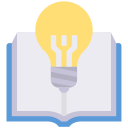
Open-Source Python Libraries for Beginners
Delving into Python opens a world of opportunities, especially through its rich ecosystem of open-source libraries. Whether you’re just starting out or aiming to build your programming skills, choosing the right libraries can make your journey smoother and more enjoyable. Open-source Python libraries offer freely available tools, resources, and code designed by the community to help beginners accelerate their learning, streamline development, and explore diverse areas such as data analysis, web development, automation, visualization, and more. This guide introduces key open-source Python libraries ideal for beginners, explaining their core features and how they can empower you to solve real-world problems even as a novice.
Understanding Open-Source Libraries
Open source refers to software with its source code made publicly available, allowing anyone to use, study, modify, and share it. This approach fosters collaboration, transparency, and rapid innovation, especially in popular programming languages like Python. Open-source Python libraries are shaped by contributions from both hobbyists and professional developers worldwide. For beginners, this means accessing tools that are continually refined, as well as a wealth of tutorials, documentation, and community support to help you get started and overcome obstacles as you learn.
Python libraries encapsulate common functions, routines, and frameworks, making it easier for beginners to implement complex features without deep technical expertise. They can handle tasks like reading and writing files, displaying charts, crunching numbers, or scraping data from websites. By integrating these libraries into your projects, you can focus on building applications and learning programming logic, without getting lost in intricate details. Using libraries speeds up development and helps you write more reliable, maintainable code right from the start.
Getting started with open-source libraries is straightforward thanks to tools like pip, Python’s package installer. With a single command, you can download and integrate a vast selection of libraries from the Python Package Index (PyPI) directly into your project. For instance, typing `pip install libraryname` in your terminal will fetch and install the specified package. Installation instructions are always available in each library’s documentation. This ease of setup allows you to swiftly experiment with different tools, encouraging hands-on learning and exploration.
Exploring the World of Data Analysis
pandas is one of Python’s most celebrated open-source libraries for data analysis, offering intuitive structures like DataFrames to store and manipulate tabular data. Beginners appreciate pandas for its clear syntax and powerful capabilities, which make tasks like filtering, grouping, merging, and cleaning data much simpler. Whether you’re dealing with spreadsheets, CSV files, or database outputs, pandas provides a consistent interface for wrangling data, allowing novices to quickly assemble, transform, and summarize large datasets with just a few lines of code. The extensive documentation and supportive user community make pandas approachable for new programmers.
Previous
Next
Building Web Applications with Python Libraries
Flask for Lightweight Web Apps
Flask is a micro web framework that shines because of its simplicity, flexibility, and concise documentation. It’s particularly favored by beginners who want to build a functional web application without unnecessary complexity. Flask makes it straightforward to set up routes, connect to databases, and deploy your site, all while learning core web development principles. Its modular design lets you start small and add features as you progress. For new learners, Flask’s gentle learning curve encourages experimentation and rapid prototyping, while its widespread adoption ensures that help and tutorials are always readily available.
Django for Robust Web Projects
For those ready to tackle larger web development projects, Django provides a comprehensive toolkit designed to help you build scalable, maintainable web applications efficiently. Django’s open-source framework comes with built-in modules for user authentication, content management, and database migrations, empowering beginners to produce professional-quality sites without reinventing common functionalities. Its “batteries-included” philosophy means you can learn about core web practices—such as managing models, templates, and views—while avoiding routine setup headaches. Django’s extensive documentation and strong global community support make it an excellent choice for newcomers eager to grow their skills.
Requests for Simplified HTTP Access
Interacting with the web often requires sending HTTP requests to servers and processing their responses. The Requests library offers a beginner-friendly way to fetch data, submit forms, or interact with APIs, abstracting away the confusing details of network programming. With a simple and intuitive interface, Requests allows you to focus on your project’s logic rather than low-level communications. Whether you’re retrieving a web page, sending data, or consuming a public API, Requests empowers newcomers to expand their Python projects’ interactivity and data acquisition capabilities with minimal code and maximum clarity.
Automating Tasks and Processes
The os module is a built-in Python library that allows you to interact with the operating system in an intuitive manner. Beginners find os especially useful for automating common file and directory tasks such as creating folders, moving files, or reading the contents of a directory. The module provides clear, human-readable functions that abstract away the complexity of system-level interactions, making Python scripts a practical way to streamline file organization or backups. By mastering os early on, you lay the groundwork for more advanced scripting and automation endeavors in your programming journey.
Enhancing Your Programming Skills
Project-based learning is one of the most effective ways for beginners to sharpen their programming skills. By using open-source libraries in practical, hands-on projects, you not only gain familiarity with key tools but also deepen your understanding of their purpose and best use cases. Each project presents new challenges—from managing errors to optimizing performance—and encourages creative thinking as you customize and expand your solutions. As you complete more projects, your knowledge compounds, and you gain the confidence to tackle increasingly complex tasks with ease.
Creating Compelling Visualizations
Seaborn builds on top of Matplotlib to provide a high-level interface for creating attractive and informative statistical graphics. For beginners, Seaborn’s user-friendly syntax and built-in themes facilitate the creation of visually appealing charts, heatmaps, and regression plots. This makes it ideal for exploring correlations, trends, and patterns in data with minimal code. Seaborn’s integration with pandas allows you to effortlessly visualize DataFrames, making complex explorations both accessible and visually compelling. Learning Seaborn helps newcomers appreciate the nuances of data storytelling through effective visual communication.


Jumpstarting Machine Learning Basics
scikit-learn is one of the most beginner-friendly open-source libraries for classic machine learning algorithms in Python. Its straightforward interface lets you experiment with classification, regression, clustering, and dimensionality reduction using real-world datasets. The well-organized documentation guides you from data preparation to model evaluation, making scikit-learn the perfect tool for those new to the field. With scikit-learn, you can grasp foundational machine learning concepts through hands-on practice without getting bogged down in mathematical theory, empowering you to build practical, predictive systems early in your learning journey.
Online Tutorials and Courses
A wealth of online tutorials, video courses, and interactive platforms provides structured learning tailored for every level. Beginners benefit from step-by-step guides, practical projects, and immediate feedback, helping them solidify foundational knowledge and build more complex solutions. Many tutorials focus on using specific libraries in real-world scenarios, which means you gain experience that translates directly into your own projects. As you progress, advanced courses deepen your expertise, guiding you toward professional-standard programming with confidence.
Books and Reference Guides
Comprehensive books and reference texts remain invaluable companions for beginners delving into Python’s open-source libraries. These resources often present broader programming concepts in context, provide in-depth explanations, and offer exercises for hands-on practice. Popular titles may cover general Python usage, introduction to specific fields like data science, or deep dives into major libraries such as pandas, Flask, or Django. A strong reference book serves as a go-to resource throughout your learning journey, ensuring you always have guidance when facing unfamiliar challenges.
